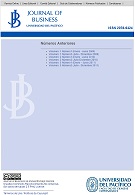Cooperation and development in local communities of Spain and Peru
Keywords:
Common Cause, Collective Benefit, Endogenous Development, Human Development, Sustainable Development
Abstract
Nowadays, the world faces a scenario of growing competition between companies and territories. The challenges of globalization requires cities and regions to propose strategies that stimulate the processes of capital accumulation by the diffusion of innovation and knowledge, the adoption of more flexible forms of production organization and the development of economies of urbanization, between others. Therefore, in this paper three experiences of endogenous development represented by the Spanish Development Agency Iraurgi Lantzen (Spain), Finca Peru (Peruvian civil non-profit organization) and the Rural Community of Cullpe (Peru) will be analysed, in order to identify and compare the various aspects related to the autonomous development of communities. The dynamics of development in each region or city is directly related to investment decisions and the attractions of the dependent territories. For Iraurgi Lantzen improvement is reported in the region 1, medium 2 Urola with the construction of a new road, which encourages municipalities in the area to look for a consensus to help generate employment and wealth in line with the interests for development and promotion of the valley. On the other hand, the case of Finca Peru shows a joint initiative to foster progress and development in the hardest hit by poverty and subversion regions, as the provinces of Huancavelica and Ayacucho were, in the Peruvian Andes. This organization ensures the socio-economic improvement of the population, particularly women, through the creation of community bank, acting on the basis of three pillars: human development, credit and savings. Finally, the case of the Rural Community of Cullpe shows an example of social leadership, innovation, ability to call and ethical-moral principles resuscitating a community stricken by poverty and limited resources, creating comparative advantages and opportunities for development rural. In conclusion, the case studies show that endogenous development in communities is possible only if they develop a greater capacity to work for a common cause identified. Thus, the benefit of the group in a sustainable manner is achieved.Downloads
View per year:
Download data is not yet available.
How to Cite
Quevedo Alejos, M. I., & Chávez Passano, M. (1). Cooperation and development in local communities of Spain and Peru. Journal of Business, Universidad Del Pacífico (Lima, Peru), 1(2), 35-53. https://doi.org/https://doi.org/10.21678/jb.2009.22
Issue
Section
Articles



.jpg)




